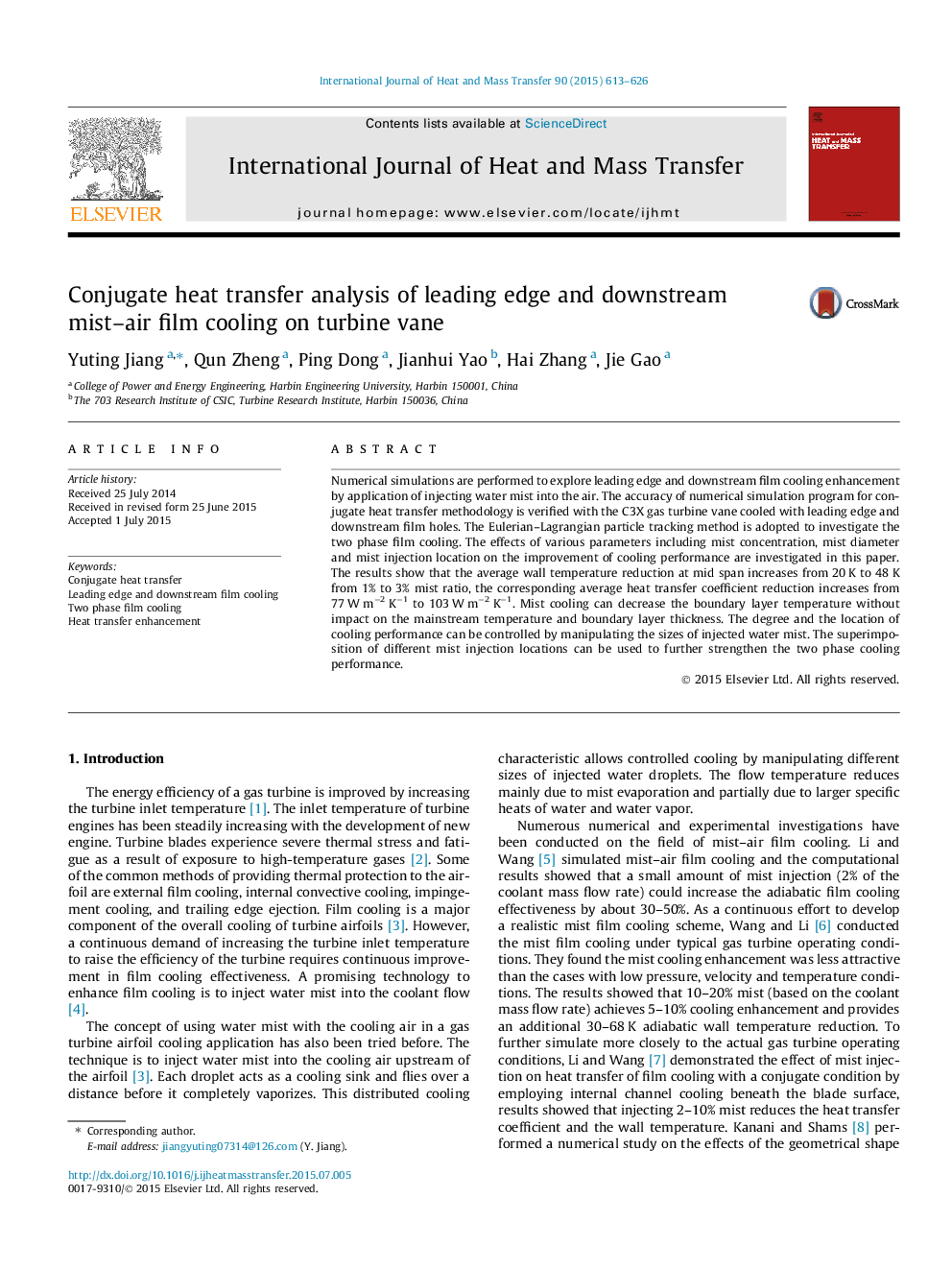| Article ID | Journal | Published Year | Pages | File Type |
|---|---|---|---|---|
| 7056512 | International Journal of Heat and Mass Transfer | 2015 | 14 Pages |
Abstract
Numerical simulations are performed to explore leading edge and downstream film cooling enhancement by application of injecting water mist into the air. The accuracy of numerical simulation program for conjugate heat transfer methodology is verified with the C3X gas turbine vane cooled with leading edge and downstream film holes. The Eulerian-Lagrangian particle tracking method is adopted to investigate the two phase film cooling. The effects of various parameters including mist concentration, mist diameter and mist injection location on the improvement of cooling performance are investigated in this paper. The results show that the average wall temperature reduction at mid span increases from 20Â K to 48Â K from 1% to 3% mist ratio, the corresponding average heat transfer coefficient reduction increases from 77Â WÂ mâ2Â Kâ1 to 103Â WÂ mâ2Â Kâ1. Mist cooling can decrease the boundary layer temperature without impact on the mainstream temperature and boundary layer thickness. The degree and the location of cooling performance can be controlled by manipulating the sizes of injected water mist. The superimposition of different mist injection locations can be used to further strengthen the two phase cooling performance.
Related Topics
Physical Sciences and Engineering
Chemical Engineering
Fluid Flow and Transfer Processes
Authors
Yuting Jiang, Qun Zheng, Ping Dong, Jianhui Yao, Hai Zhang, Jie Gao,
